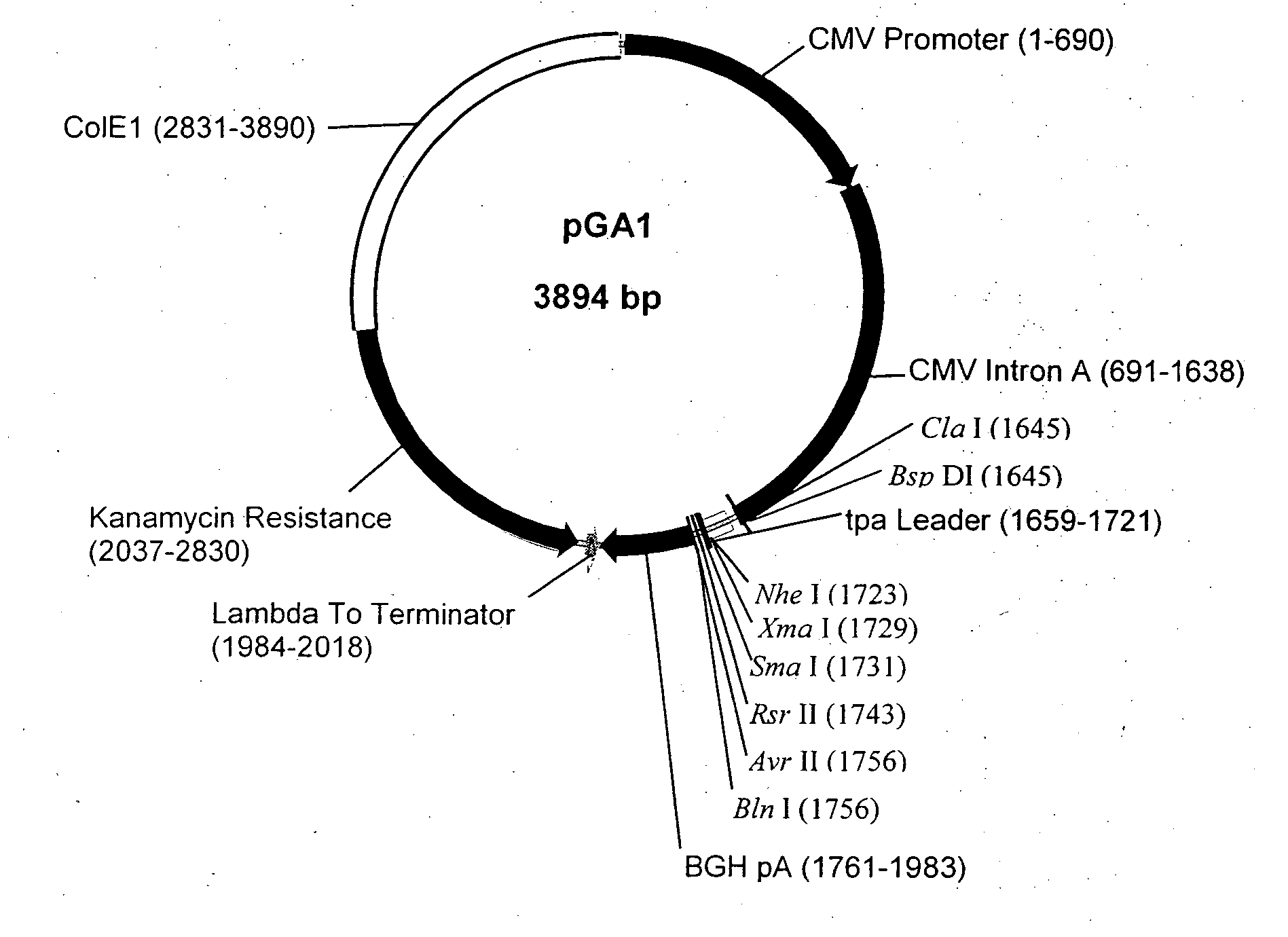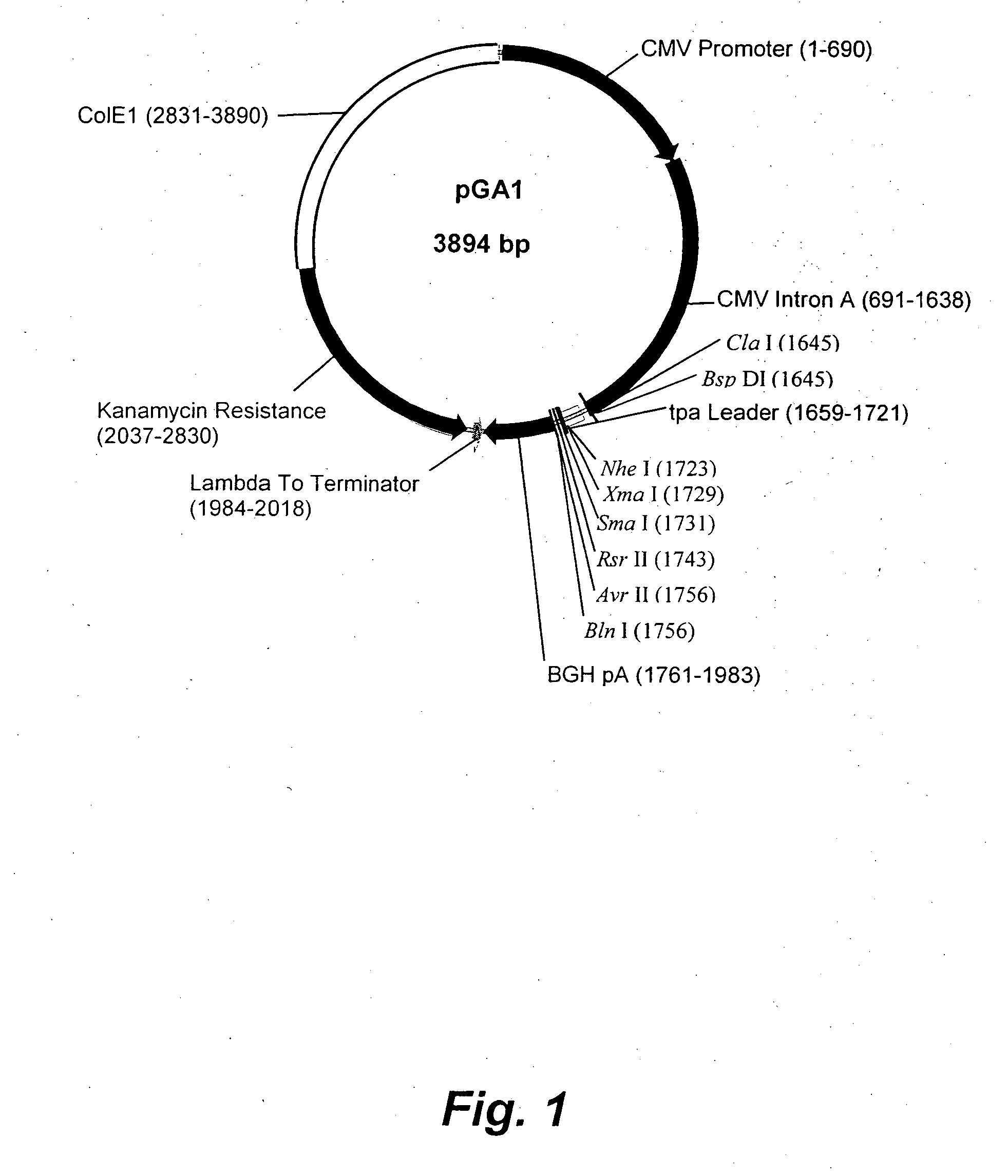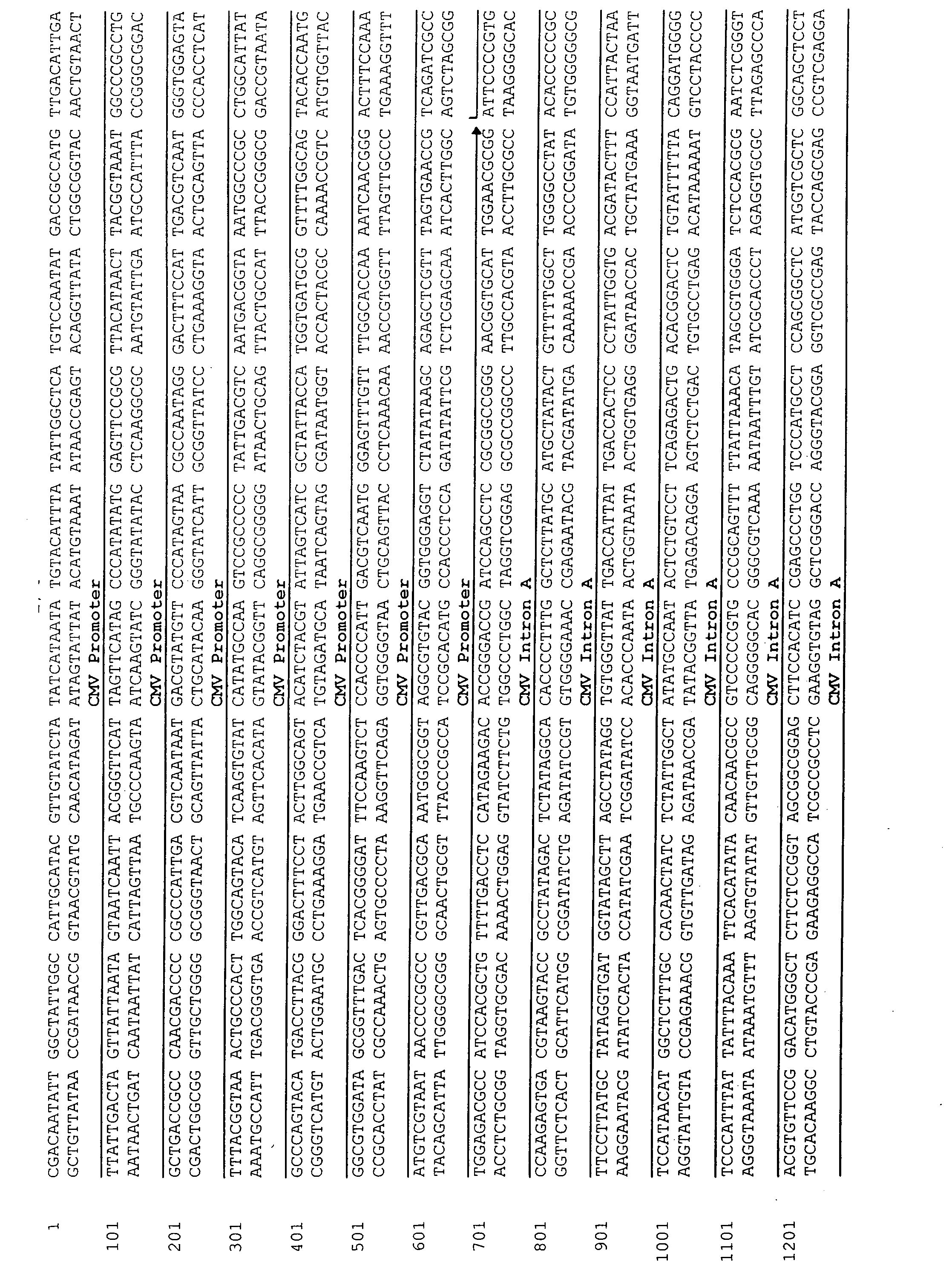Compositions and methods for generating an immune response
- Summary
- Abstract
- Description
- Claims
- Application Information
AI Technical Summary
Benefits of technology
Problems solved by technology
Method used
Image
Examples
example 1
Structure and Sequence of pGA1
[0108] pGA1 as illustrated in FIG. 1 and FIG. 2 contains the ColE1 origin of replication, the kanamycin resistance gene for antibiotic selection, the lambda T0 terminator, and a eukaryotic expression cassette including an upstream intron. The ColE1 origin of replication is a 1059 bp nucleotide DNA fragment that contains the origin of replication (ori), encodes an RNA primer, and encodes two negative regulators of replication initiation. All enzymatic functions required for replication of the plasmid are provided by the bacterial host. The originally constructed plasmid that contained the ColE1 replicator was pBR322 (Bolivar et al., Gene 2:95-113, 1977; Sutcliffe et al., Cold Spring Harbor Quant. Biol. 43:77-90, 1978).
[0109] The kanamycin resistance gene is an antibiotic resistance gene for plasmid selection in bacteria. The lambda T0 terminator prevents read through from the kanamycin resistance gene into the vaccine transcription cassette during prok...
example 2
Structure and Sequence of pGA2; pGA2-Based Vaccines
[0116] pGA2 is schematically illustrated in FIG. 3, and its nucleotide sequence (SEQ ID NO: 2) is shown in FIG. 4. pGA2 is identical to pGA1 (SEQ ID NO: 1) except that the intron A sequence has been deleted from the CMV promoter of pGA2. pGA2 was created from pGA1 by introducing a Cla I site 8 bp downstream from the mRNA cap site in the CMV promoter. The Cla I site was introduced using oligonucleotide-directed mutagenesis using the complimentary primers having the sequences: 5′-CCGTCAGATCGCATCGATACGCCATCCACG-3′ (SEQ ID NO:7) and 5′-CGTGGATGGCGTATCGATGCGATCTGACGG-3′ (SEQ ID NO:8). After insertion of the new Cla I site, pGA1 was digested with Cla I to remove the 946 bp Cla I fragment from pGA1, and then religated to yield pGA2.
[0117] As noted herein, vectors having one or more of the features or characteristics (particularly the oriented termination sequence and a strong promoter) of the plasmids designated pGA1, pGA2, or pGA3 (incl...
example 3
Structure and Sequence of pGA3
[0120] pGA3 is schematically illustrated in FIG. 5, and its nucleotide sequence (SEQ ID NO:3) is shown in FIG. 6. pGA3 is identical to pGA1 except that a Hind III site has been introduced in place of the Cla I site at nucleotide 1645 of pGA1, and a BamH I site has been introduced in place of the Rsr II site at nucleotide 1743 of pGA1. Accordingly, the pGA3 vector is an embodiment of the invention; as are pGA1 and pGA2; as are plasmid vectors having one or more of the features or characteristics of a pGA plasmid (see the detailed description), but different restriction endonuclease sites in the multi-cloning site (e.g., the invention encompasses plasmids that are otherwise substantially similar to pGA1, pGA2, or pGA3 but that have more, less, or different restriction endonuclease sites in their multi-cloning site).
PUM
| Property | Measurement | Unit |
|---|---|---|
| Mass | aaaaa | aaaaa |
| Mass | aaaaa | aaaaa |
| Biological properties | aaaaa | aaaaa |
Abstract
Description
Claims
Application Information
 Login to View More
Login to View More - R&D
- Intellectual Property
- Life Sciences
- Materials
- Tech Scout
- Unparalleled Data Quality
- Higher Quality Content
- 60% Fewer Hallucinations
Browse by: Latest US Patents, China's latest patents, Technical Efficacy Thesaurus, Application Domain, Technology Topic, Popular Technical Reports.
© 2025 PatSnap. All rights reserved.Legal|Privacy policy|Modern Slavery Act Transparency Statement|Sitemap|About US| Contact US: help@patsnap.com



